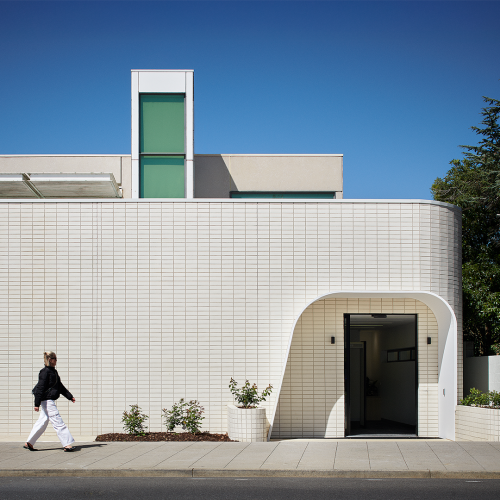On May 3 this year, I ran the Greenbelt Half Marathon, a 21km event put on by the South Australian Road Runners Club.
The experience of training for this event got me thinking about how far office design and ergonomics has evolved (I am an interior architect, after all). The best office interiors have evolved to nurture the whole person both at work and in the other parts of their life.
It’s closely linked to our expanding knowledge economy, as leaders grapple with the challenges of engaging a highly mobile, highly educated workforce. This holistic approach to office design is a critical factor in engaging talent and fostering productivity.
I’ll use myself as an example of why I believe these design principles are vital for all organisations that want to be leaders in their field.
How a focus on work/life balance changes the way I look at office design
Deciding to participate in the half-marathon was a way of changing my priorities. It’s been on my bucket list for years, and I guess it’s to do with my age. You start to notice the health repercussions of working intensely on tight project timelines.
I used to do heaps of running in my 20s, and I loved it. But you know how it is: I moved interstate, I had a lot on professionally, and my regular run slipped off my priority list.
This kind of run takes training.
Here’s a snapshot of how my thinking was impacted by a week of my training.
When you want to get fit, you look at your office in a completely different way. Since I started training a couple of months ago, I’ve started looking around my office for opportunities to move and stretch.
Monday
Today I got out of the lift a couple of floors down and walked up the fire stairs.
I’ve also stopped sending emails to people in the same office (as much) and noticed how much more walking and stretching and getting out of my chair I do. That feels good.
As a result of moving more in the office, I feel a bit warmed up when I start my actual training.
Quite a few clients are asking about the “standing desk” in the research phase of our interiors projects. There’s so much more awareness of the health risks of sitting down all day.
Tuesday
It’s not uncommon for us to spend as many as 13.45 hours a day sitting, according to the state government website, SA Health, when you count getting to work, sitting for meals and watching TV.
Technology is a driver of all this, but somehow within that, we have to learn to make time for ourselves to protect our health.
One of the real positives about activity-based workplace design (which has some downsides too, I know), is having different spaces for different activities, which encourages us to get up and walk about between our various tasks through the day.
As I train, I’ve become super aware of how much time I spend sitting down at my computer!
I’m starting to really appreciate the proximity to green space of our Hames Sharley office here in Adelaide. It’s about 10 minutes for me to walk to the park by the Torrens River, and 15 minutes for me to cross the river by walk bridge and get into Creswell Gardens, which is just one part of the green space along the north side.
Wednesday
It’s something I’m aware of in our interiors work: how we can tie the inside space to outside space, with views, with how we orientate the spaces, where we place partitions, and breakout spaces.
My colleagues are swinging wildly between encouraging me with my training and getting sick of my holier-than-thou moments (yes, I’m just a little evangelistic at the moment.)
Thursday
It’s important that fostering more movement and activity in the workplace is done in a sensitive way. It’s not about jamming health and fitness down people’s throats, but of making spaces that make the active option the most attractive. When we look out a window at a lovely courtyard, it entices us to take a breather for lunch instead of eating at our desk, for example.
Work/life balance is a leadership issue. I see it all the time with our projects. Even with small budgets, tight timelines and high expectations, if the leaders are committed to work-life balance it shows in how the office interior is designed, and the training provided for people so they can be efficient but not overloaded.
Friday
It’s about making sure there are quiet spaces where people want to work uninterrupted, as well as rooms where collaborative activity happens.
Moving from one room to another to get things done, and thinking about the task you have effectively got to do, helps to bring more balance through the workday.
Remember when the idea of “ergonomics” began to be widely discussed? It was when the introduction of desktop computers led to a sudden upswing in repetitive strain injury (RSI) affecting people’s wrists (especially people who did a lot of typing). It led to a rethinking of the height of desks and the need for adjustable chairs. It was a kind of simplistic solution to our complex human needs.
We are a family
Now we are looking at adjusting the height of desks, getting out of our chairs altogether, moving around our offices, bringing in natural light and fresh air, and cycling or walking instead of driving to work.
However, it was starting a project with Aboriginal Health South Australia that sparked my rethinking of work-life balance. The staff at AHSA are like a giant family in their approach. When I met them, they said welcome to the family and we want to do your best. I have never felt like that before. It was one of those things that triggered my thinking about how I go about looking after myself.






